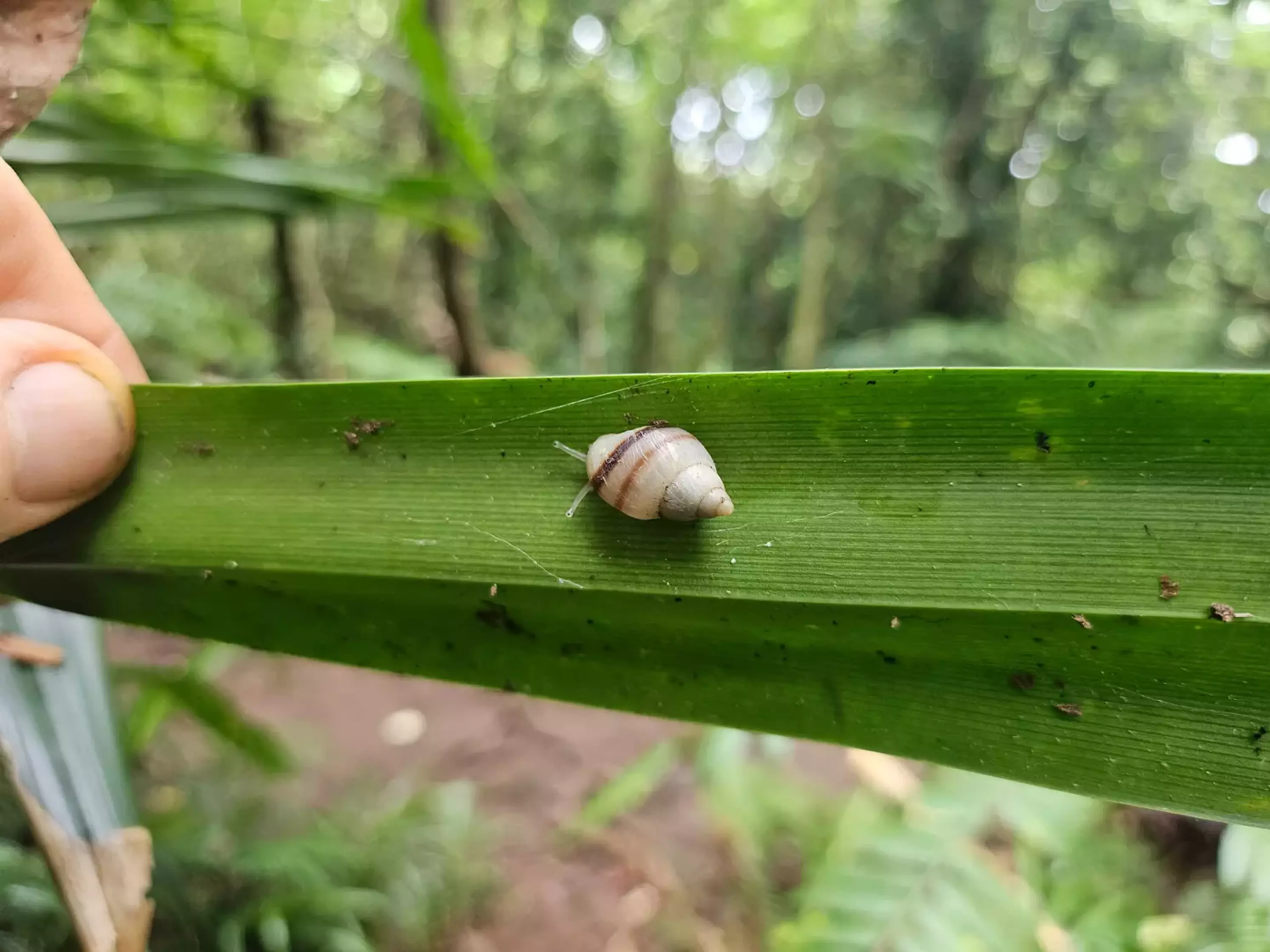When Partula tree snails first arrived at ZSL’s London Zoo, these species were on the brink of being lost forever. Once found across French Polynesia’s volcanic islands, the arrival of the carnivorous rosy wolf snail to the islands had driven most of the Partula snail species to extinction. Only an international conservation breeding initiative - coordinated by ZSL - prevented ten of the last surviving species being lost forever. Decades later, efforts to recover wild populations of these remarkable snails have reached an incredible milestone - making it the latest success story from conservation zoos working to save species on the edge of extinction and get them on the road to recovery.
Saving Partula Snails
The rescue mission to bring the 1-2cm long Partula snails into the care of conservation zoos marked the start of a remarkable journey to give them a second chance.
While these snails disappeared from the wild, the rescue populations nurtured under human care offered a beacon of hope. ZSL conservationists and the wider zoo community have been working tirelessly to breed 15 species and sub-species of these remarkable snails, and over the last decade the team have been reintroducing them back into their Polynesian forest habitat.
Those years of conservation efforts are paying off. The team recently made one particularly incredible discovering on the island of Moorea: wild-born adults of Partula tohiveana, a species previously extinct in the wild. Not only had the reintroduced snails survived, their offspring were making it into adulthood – leading to Partula tohieveana being officially downlisted from Extinct in the Wild to Critically Endangered on the IUCN Red List.
A second chance for nature
The Partula success story is just one part of our wider mission to restore a world where wildlife can thrive. We founded the Extinct in the Wild Alliance – an initiative that goes beyond providing expert care in our two conservation zoos. It is conservation in action, using cutting-edge science to recover wild populations of species that otherwise would have been lost forever.
Extinct in the wild species are the most threatened species on the planet. Having disappeared from their wild homes, their survival depends entirely on human care - their future is in our hands.
Research from our scientists published in Science – one of the world’s leading journal for cutting-edge science –was the first to comprehensively evaluate the 95 extinct in the wild animals and plants that since 1950 have only survived in human care and highlighting the power that conservation zoos, aquariums, botanical gardens and seedbanks globally have to rewrite the story of these incredible species that we share the planet with.
We work at the forefront of getting these species on the road to recovery. While our conservation zoos care for more than half of the world’s extinct in the wild animal species, our research drives the evidence-based action plans to restore wild populations of these species and get them on the road to recovery.
Our work isn’t just about rescue operations, breeding programmes and wild releases. Releases are often just the beginning of the story, and the work must continue to help populations grow and thrive until they ultimately get to the point where they no longer need human support.
Conservation Success Stories
We know that conservation works. We have a long history driving the recovery of these extinct in the wild species. While the downlisting of Partula tohiveana after years of carefully breeding them at London Zoo is our most recent success story, it is just the latest in a long list of work shining a spotlight on just how powerful conservation is when it comes to turning the tide for these species that seem destined for extinction.
Most recently, we celebrated the return of the striking blue and cinnamon plumed sihek (also known as Guam kingfisher) to the wild for the first time since the 1980s – the result of a global partnership chaired by Professor John Ewen at ZSL’s Institute of Zoology. The nine birds were bred for this release and hand-reared by zookeepers – including from keepers at ZSL’s two conservation zoos. The team of conservationists continue to monitor the birds in anticipation of the day the first wild sihek chicks in around 40 years start hatching.
Meanwhile in Chad, the scimitar horned oryx, an antelope that was once widespread across North Africa – was recently downlisted from Extinct in the Wild to Endangered on the IUCN Red list. This announcement followed the successful establishment of a self-sustaining population, with animals from Whipsnade Zoo contributing to the founding herd. We continue providing expert input on long-term field monitoring as part of a wider conservation collaboration for the species as work continue to recover them.
Our work continues, and from leading conservation efforts to return tiny pupfish to lakes in Mexico to our keepers at London Zoo welcoming the newest chicks of an extinct in the wild dove, we’re making the most of every chance to bring these incredible species back from the brink.
Seeing Partula tohiveana breeding successfully in the wild for the first time in decades is a reminder of why we do what we do. Our work to protect and recover Extinct in the Wild species globally continues, but this most recent success shows just what can be achieved when we refuse to give up on these species.
Climate change and human activity have pushed our precious planet to its limit, causing the devastating loss of so many habitats and species. From lab to field, hands-on and behind the scenes, we’re leading the future of conservation, shaping agendas and influencing change to support better life, health and living for people and wildlife.
